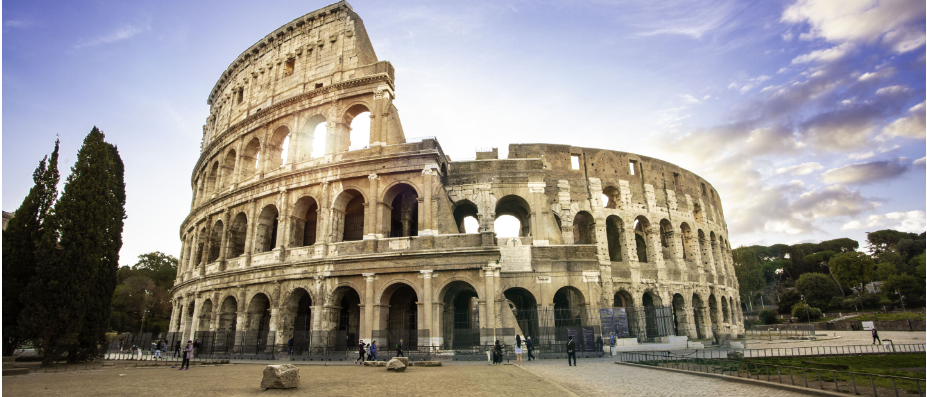
Venice
Enter your dates to find available
activities
Venice, a city like no other, sits in northern Italy and serves as the capital of the Veneto region. Known as a major seaport, it boasts a rich history as a center of trade and culture. Back in the day, Venice was the heart of a powerful maritime republic. It played a crucial role in connecting Europe to Asia, making it the greatest seaport in medieval Europe. Today, Venice is still a significant Italian port on the northern Adriatic Sea and one of the oldest cultural and tourist hotspots in the world.
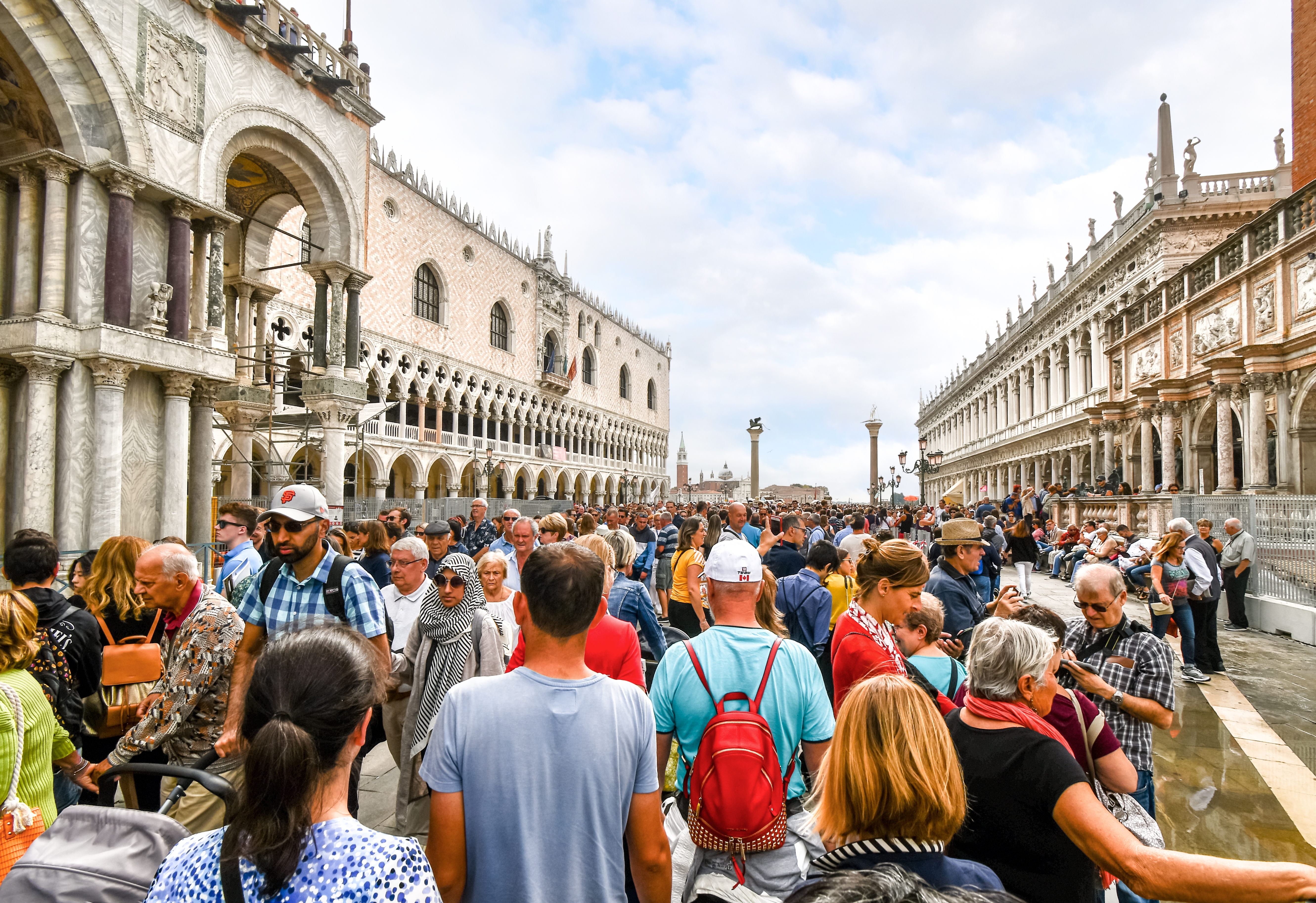
Venice, the enchanting capital of Italy's Veneto region, is renowned for its stunning canals, historic architecture, and vibrant culture. As one of the most unique cities in the world, Venice captivates visitors with its intricate network of waterways and charming streets. When planning your visit, it's essential to consider where to stay in Venice. The city offers a range of accommodations, from luxurious hotels overlooking the Grand Canal to quaint guesthouses in quieter neighborhoods, ensuring a memorable experience for every traveler.
One of the best ways to explore Venice is by joining one of the many Venice tours available. Whether you're interested in art, history, or gastronomy, there’s a tour tailored to your interests. Guided walking tours often include visits to iconic Venice attractions such as St. Mark’s Basilica, the Doge’s Palace, and the Rialto Bridge, providing valuable insights into the city’s rich past and vibrant present.
A gondola ride through the picturesque canals is a quintessential Venice experience. This romantic adventure allows you to glide past historic buildings, under charming bridges, and along the vibrant waterfront. As you meander through the waterways, your gondolier may share fascinating stories and local legends, enhancing the experience.
For art lovers, the Peggy Guggenheim Collection is a must-visit. Housed in a stunning canal-side palazzo, this museum showcases an impressive array of modern art from renowned artists. Additionally, the Gallerie dell'Accademia offers a glimpse into Venetian art history, featuring masterpieces from the Renaissance period.
Don't forget to explore the bustling local markets, where you can savor delicious Venetian cuisine. Try traditional dishes like cicchetti (small snacks) paired with local wines. For a unique experience, take a cooking class to learn how to prepare authentic Venetian dishes yourself.
Venice also serves as an excellent base for day trips to nearby islands like Murano, known for its exquisite glass-making, and Burano, famous for its colorful houses and lace-making tradition.
With its rich history, stunning scenery, and vibrant culture, a Venice city tour promises an unforgettable experience. Whether you’re wandering through its narrow alleys, enjoying a leisurely meal at a canal-side café, or attending a local festival, Venice is sure to leave a lasting impression.
What to bring
What not to bring
By Air
Venice is served by Marco Polo Airport, located about 13 kilometers from the city center. From the airport, you can take a water taxi, shuttle bus, or a direct Alilaguna water bus to reach your destination.
By Train
The Santa Lucia Train Station is conveniently located on the Grand Canal, offering easy access to Venice. Trains from major cities like Milan, Florence, and Rome frequently arrive here.
By Bus
If you’re traveling from nearby cities, buses arrive at Piazzale Roma, the only point in Venice accessible by road. From there, you can walk or take a Vaporetto to your accommodation.
By Car
While you can drive to Venice, be aware that the city itself is car-free. Park at one of the nearby car parks in Mestre or Piazzale Roma and continue by foot or public transport.
By Boat
If you’re coming from nearby islands such as Murano or Burano, you can take a Vaporetto (water bus) or a private water taxi, which offers a scenic approach to the city.
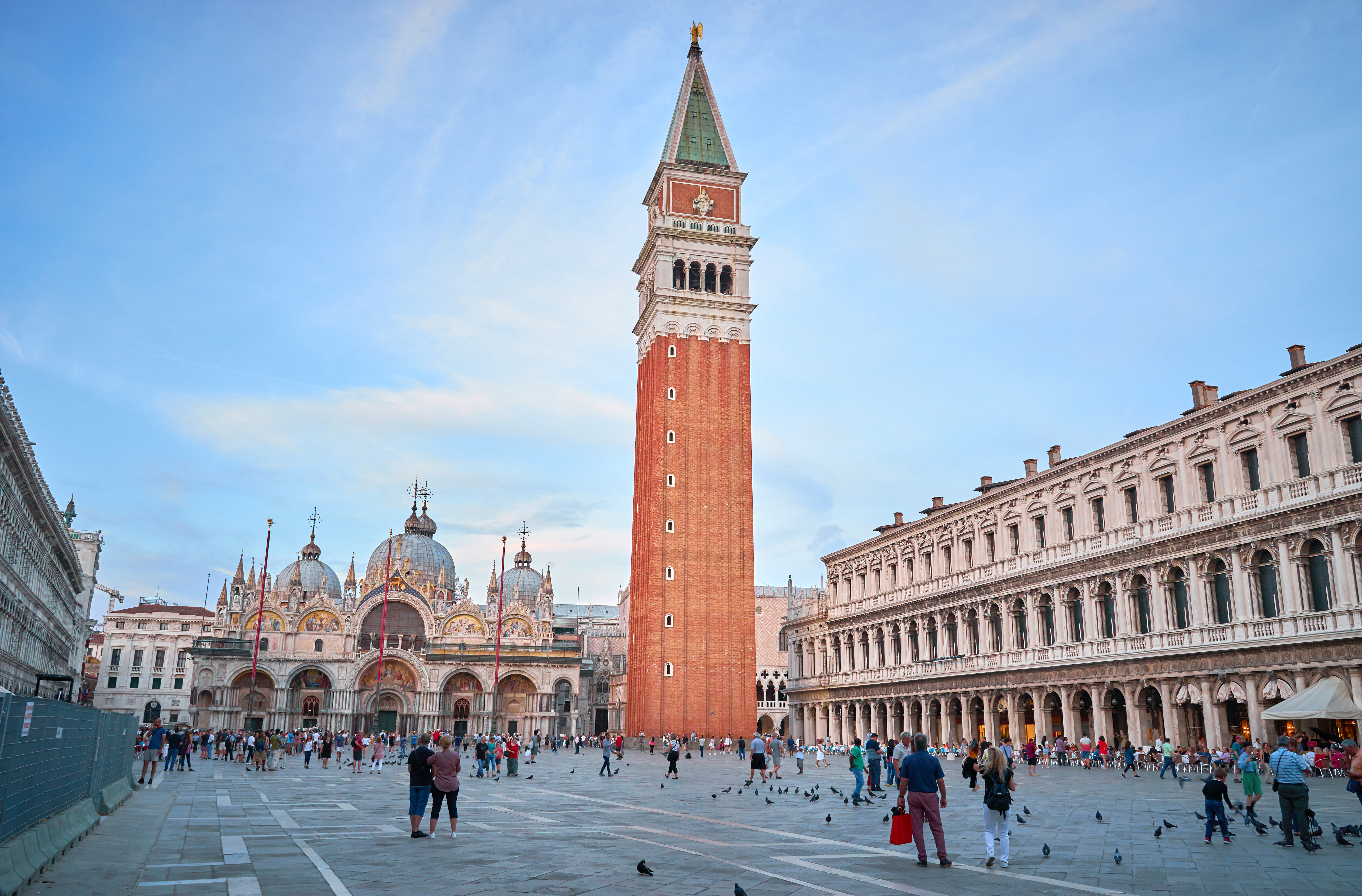
Venice is unique in that it has no cars; transportation relies on vaporettos (water buses) and gondolas. Invest in a Venice transport pass for unlimited travel on public transport. Familiarizing yourself with the waterway system will enhance your experience and help you navigate easily.
The ideal times to explore Venice are during the spring (April to June) and fall (September to October). These months offer pleasant weather and fewer crowds, allowing you to enjoy the city's beauty without the summer rush. However, be prepared for occasional rain in the fall.
When visiting Venice, it's important to respect local customs. Dress modestly when entering churches, and be mindful of your noise level in residential areas. Understanding and observing local etiquette will enhance your experience and interactions with residents.
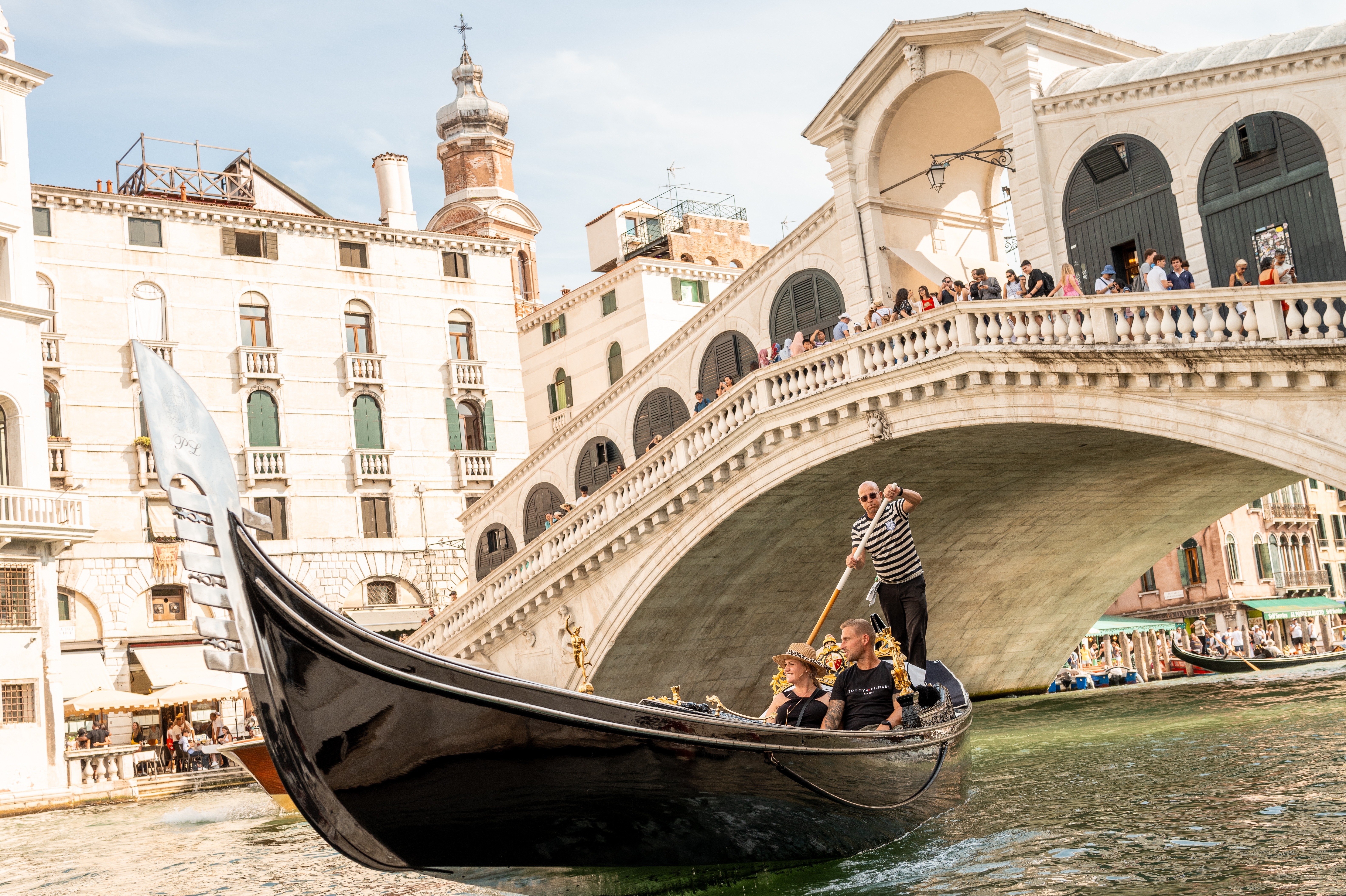
A trip to Venice wouldn’t be complete without a gondola ride through its iconic canals. Experience the charm of the city as you glide past historic buildings and under picturesque bridges. Consider hiring a gondolier who can share the history and stories of the area.
Visit the stunning St. Mark's Basilica, a masterpiece of Byzantine architecture. Marvel at the intricate mosaics and impressive domes. Be sure to explore Piazza San Marco, where you can enjoy the lively atmosphere, street performers, and local cafes.
The Rialto Market is a bustling hub of fresh produce and seafood. Visit in the morning to experience the vibrant atmosphere and sample local delicacies. This market provides an authentic glimpse into daily Venetian life and is perfect for food lovers.

Venice takes on a magical quality at night, with fewer crowds and beautifully lit canals. Take a leisurely evening stroll through the quiet streets, enjoying the ambiance and capturing stunning photos of the illuminated landmarks.
Keep an eye out for special evening events, such as concerts and festivals that often take place in Venice during the summer months. These events allow you to experience local culture and entertainment in a unique setting.
Enjoy dinner at a canal-side restaurant, savoring traditional Venetian cuisine while watching the reflections of the city’s lights dance on the water. Dining at night in Venice is a truly romantic experience that you won’t want to miss.
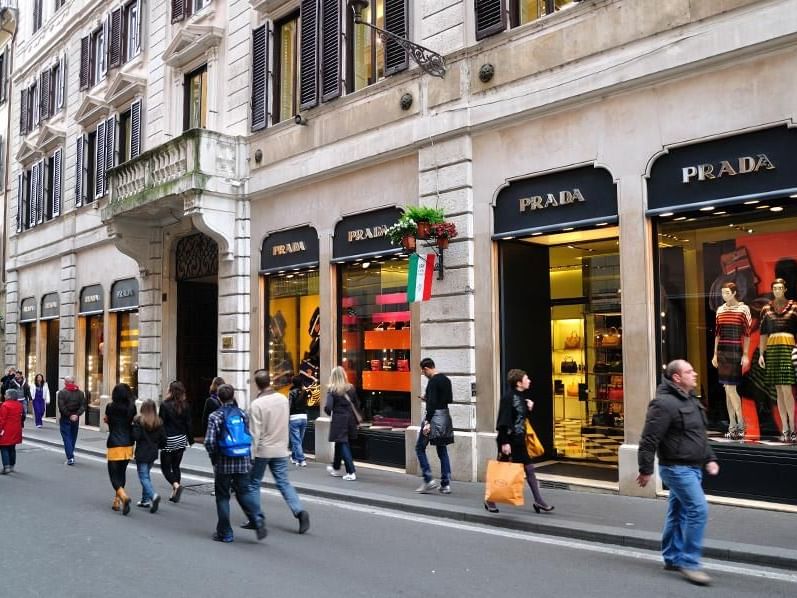
Venice is famous for its exquisite Murano glass. Visit shops and galleries to find beautiful glass art, jewelry, and home decor items. Consider taking a guided tour to Murano Island to see artisans at work and learn about this centuries-old craft.
A traditional souvenir from Venice is the ornate Venetian mask. Explore shops in the city that specialize in handmade masks, each with unique designs and stories. These masks are perfect for adding a touch of Venetian flair to your collection.
Discover unique local crafts, including handmade lace from Burano Island and artisanal products from local vendors. Shopping in Venice not only provides beautiful souvenirs but also supports local artisans and preserves the city’s cultural heritage.
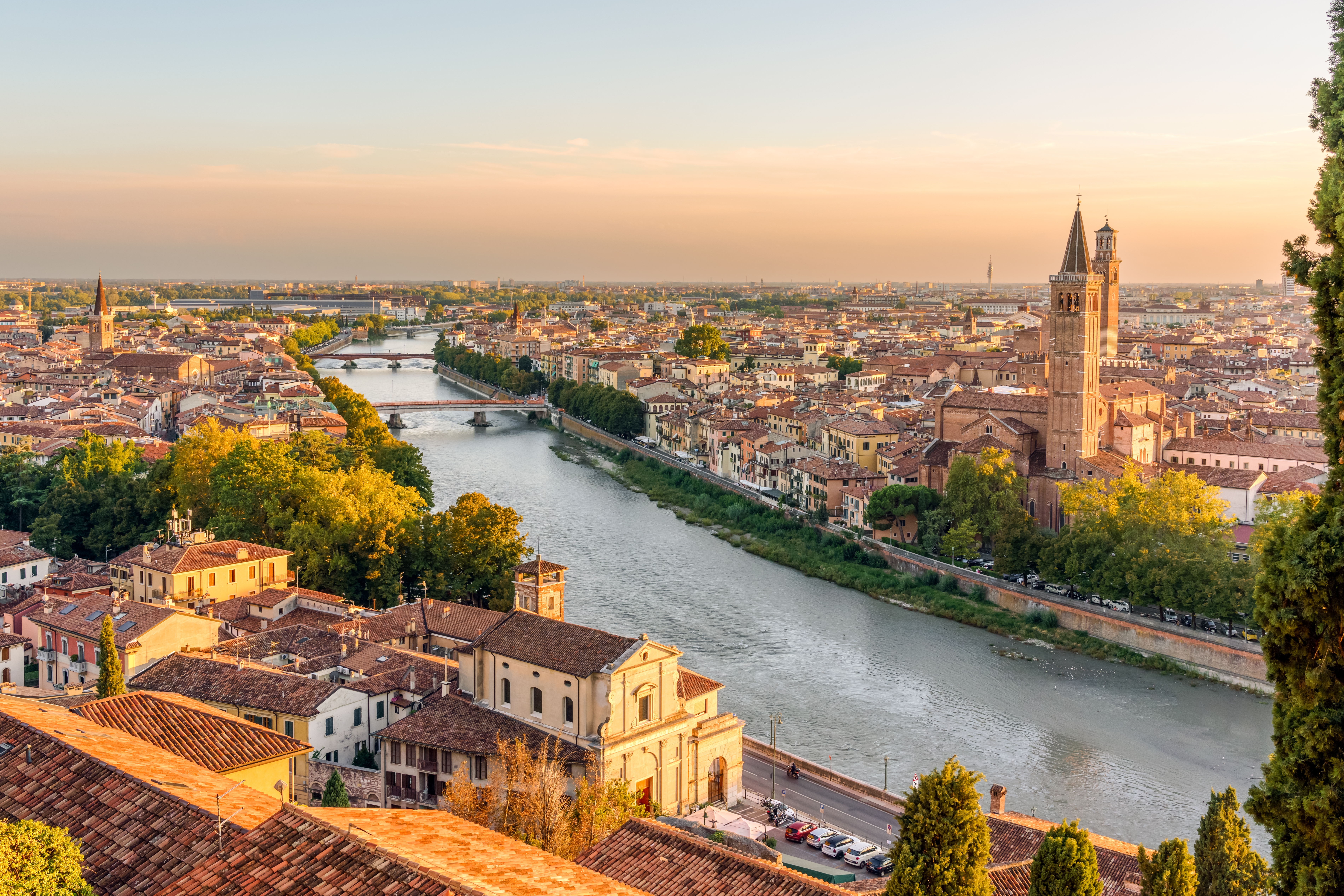
Take a day trip to the nearby islands of Murano and Burano. In Murano, you can see the famous glass-blowing workshops, while Burano is known for its brightly colored houses and exquisite lace. Both islands offer a charming escape from the bustling city.
Just a short train ride from Venice, Verona is known as the setting of Shakespeare’s "Romeo and Juliet." Explore the romantic streets, visit Juliet's House, and see the ancient Roman arena, which still hosts concerts and performances.
A visit to Padua allows you to explore its beautiful squares, botanical garden, and the impressive Scrovegni Chapel featuring Giotto's frescoes. This vibrant city offers a rich history and a more local experience just a short distance from Venice.

To avoid long lines at major attractions like St. Mark's Basilica and the Doge's Palace, it’s advisable to book your tickets online in advance. This not only saves you time but also guarantees your entry at your desired time.
Consider joining guided tours to gain a deeper understanding of Venice's rich history and culture. Expert guides can share fascinating stories and insights about the city's landmarks, enhancing your experience.
Look for combination tickets that offer access to multiple attractions, such as St. Mark's Basilica and the Doge's Palace. These packages can save you money and simplify your visit, allowing you to explore more of Venice's treasures in one day.

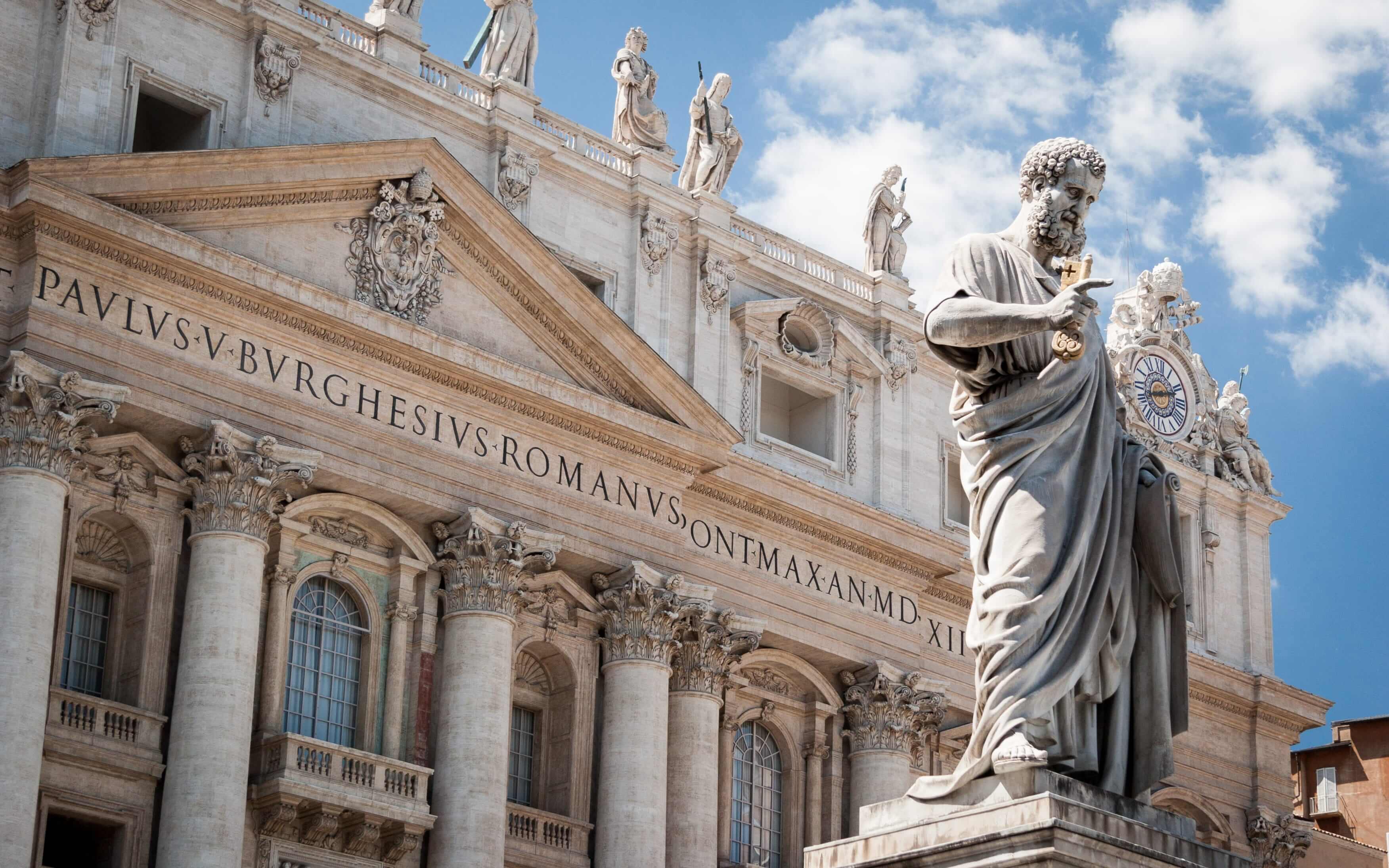
.jpg)
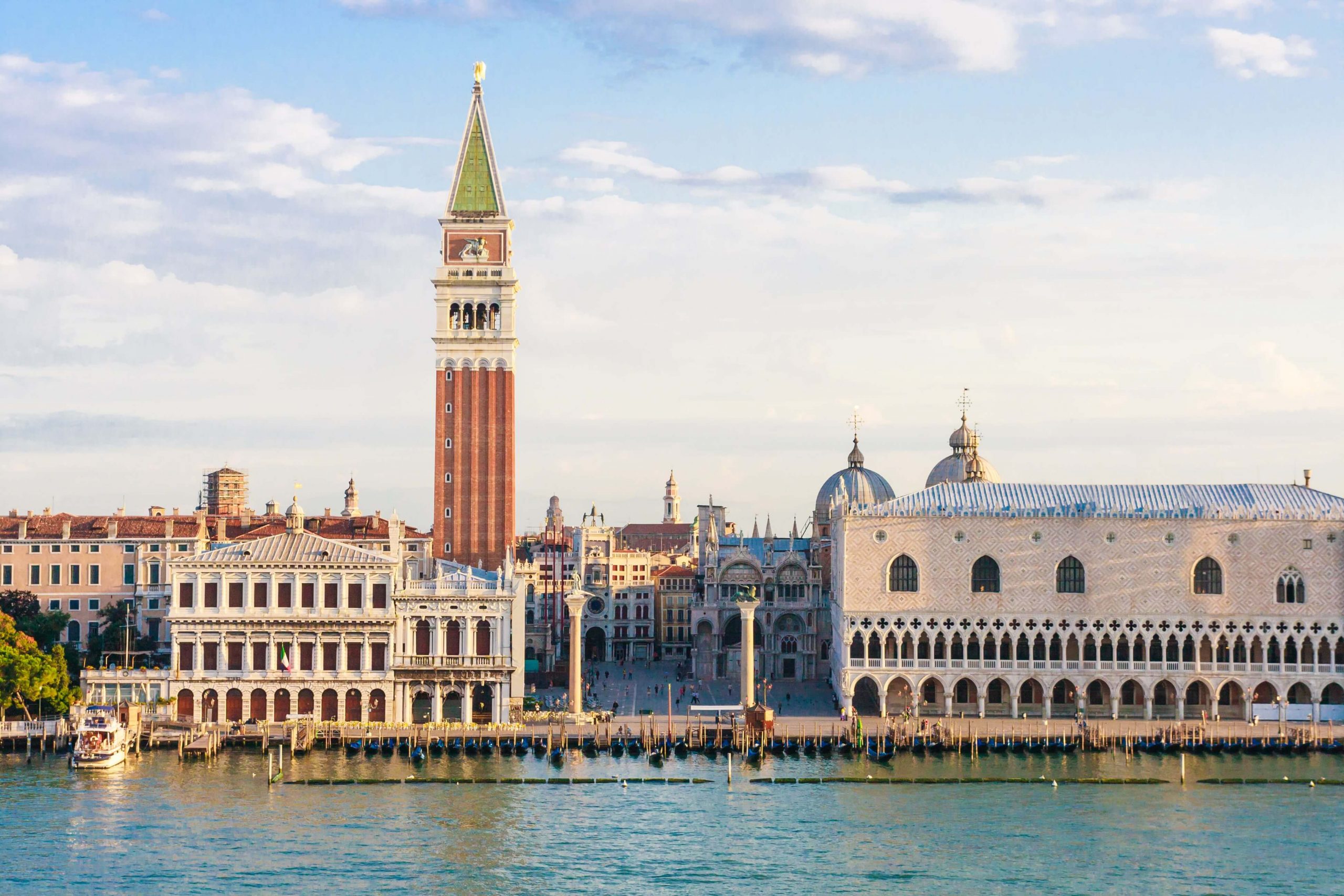
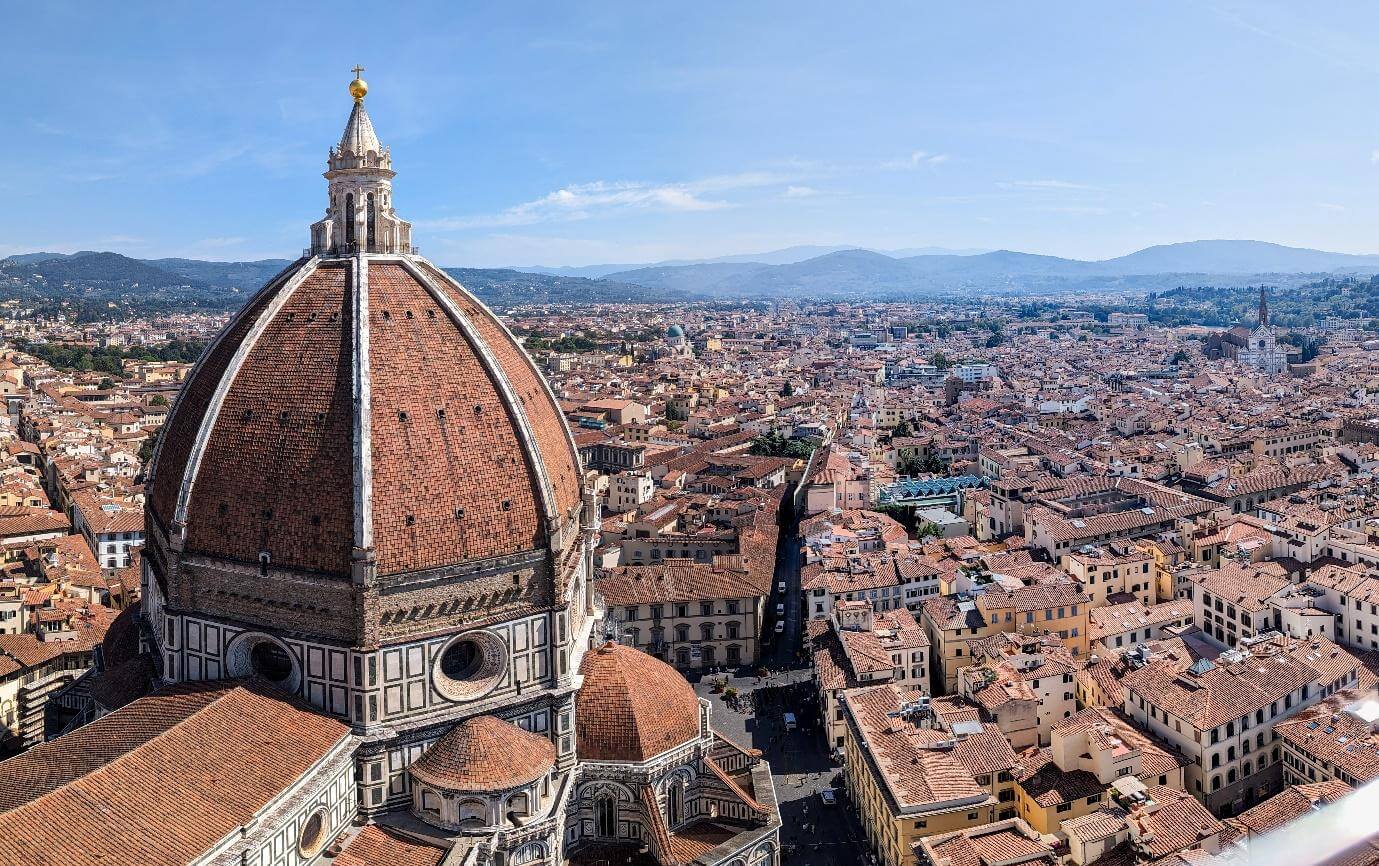
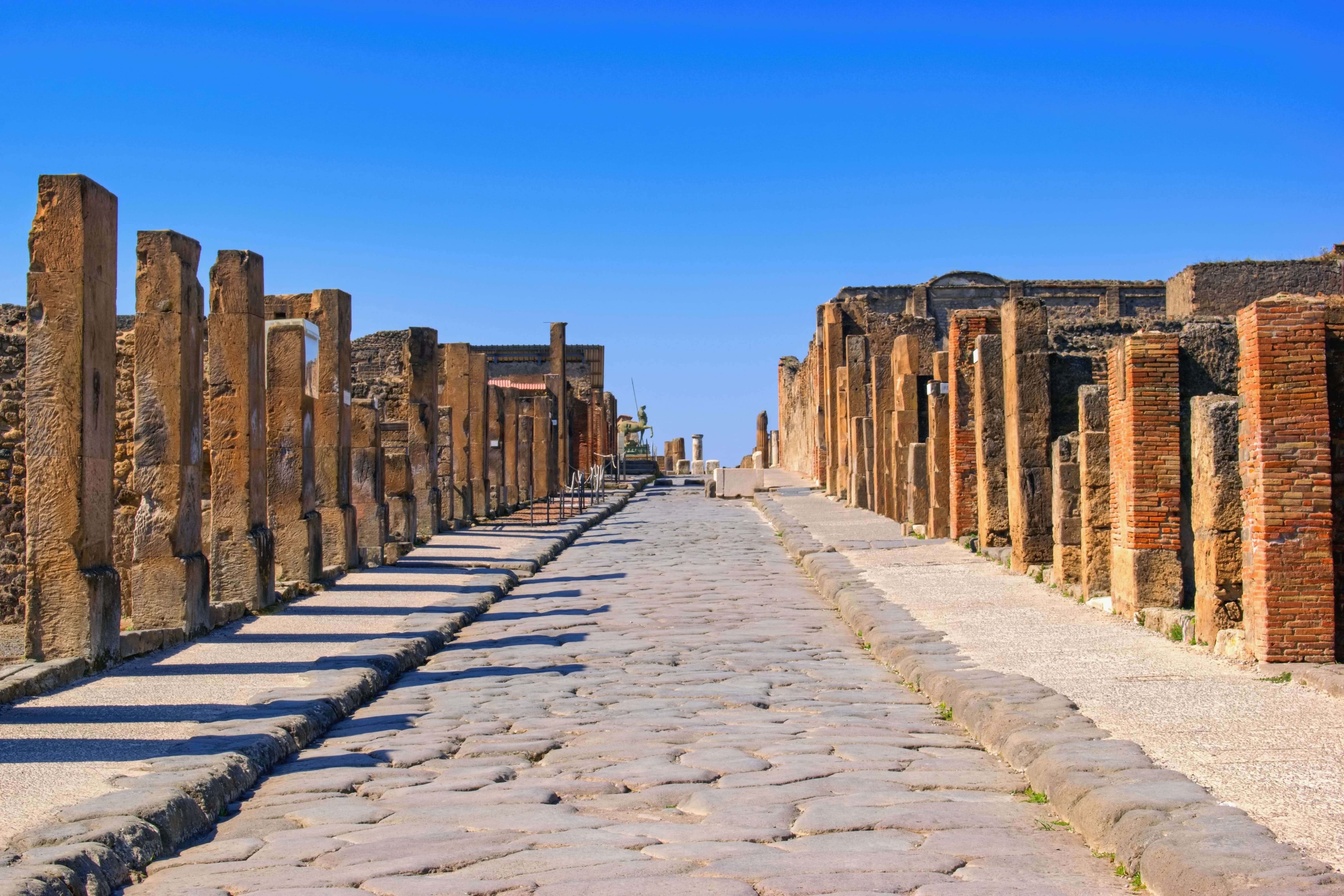
If you want to visit the heart of Ancient Rome, the Roman Forum Tour is the best way to experience the history of the ancient city. You will walk down the Via Sacra, or Sacred Way, of the Roman Forum, also known as the triumphal road. This is the same path that victorious Roman generals would follow when they returned from abroad. Every stone that lies within the Roman Forum is connected to the great moments from Ancient Rome’s past.
The Roman Forum Tour will also lead you past the triumphal arches. The Arch of Titus is especially well preserved and detailed. The Arch of Constantine is also visible from the 2nd floor balcony of the Colosseum. Only a few of these incredible arches still remain, and even fewer are well preserved.
During the Colosseum and Roman Forum tour your guide will lead you through the once bustling marketplace that was ruled by the shopkeepers and moneylenders. The Roman Forum was the focal point of the Ancient Roman Empire and was home to many religious and political buildings such as the Basilica of Maxentius and the Senate House. Although this was not the Senate House in which Julius Caesar was assassinated, you will find the temple of Julius Caesar in the Roman Forum.
With so many layers of history and architecture in the Ancient City, choosing a Colosseum and Roman Forum tour is an excellent way to experience it all. You will walk the ancient roman roads with a local guide who is an expert in their field. Not only will you visit Rome’s most famous monument, you will learn the history as well. When you walk past the broken pieces of marble strewn about the valley and past ancient temples, it is hard to believe that this area was once a vast swampland.
If you want to visit the heart of Ancient Rome, the Roman Forum Tour is the best way to experience the history of the ancient city. You will walk down the Via Sacra, or Sacred Way, of the Roman Forum, also known as the triumphal road. This is the same path that victorious Roman generals would follow when they returned from abroad. Every stone that lies within the Roman Forum is connected to the great moments from Ancient Rome’s past.
The Roman Forum Tour will also lead you past the triumphal arches. The Arch of Titus is especially well preserved and detailed. The Arch of Constantine is also visible from the 2nd floor balcony of the Colosseum. Only a few of these incredible arches still remain, and even fewer are well preserved.
During the Colosseum and Roman Forum tour your guide will lead you through the once bustling marketplace that was ruled by the shopkeepers and moneylenders. The Roman Forum was the focal point of the Ancient Roman Empire and was home to many religious and political buildings such as the Basilica of Maxentius and the Senate House. Although this was not the Senate House in which Julius Caesar was assassinated, you will find the temple of Julius Caesar in the Roman Forum.
With so many layers of history and architecture in the Ancient City, choosing a Colosseum and Roman Forum tour is an excellent way to experience it all. You will walk the ancient roman roads with a local guide who is an expert in their field. Not only will you visit Rome’s most famous monument, you will learn the history as well. When you walk past the broken pieces of marble strewn about the valley and past ancient temples, it is hard to believe that this area was once a vast swampland.

An exploration of ancient Rome would not be complete without a Palatine Hill Tour. Learn about the legend of the twin brothers, Romulus and Remus, and see where their battle for the city took place. Archaeologists are always finding something new on the Palatine Hill, in 2007 an underground chamber was found that is thought to have been the Lupercal, the chamber where legend says that Romulus and Remus were suckled by a she-wolf. Of course this seems like a far-fetched idea today, but the ancient Romans truly believed it.
The Palatine Hill is one of the famous seven hills of Rome and eventually became the site of the imperial palaces.The hill was inhabited by wealthy citizens who used it to escape the heat, noise and smells of the crowded city. It eventually became the home of the emperors after Domitian built an expansive palatial complex. During the Palatine Hill Tour you will get to see what remains of this massive palace as your guide describes its ingenious design.
From the height of the Palatine you will enjoy wonderful views of Rome’s skyline. You can look down over the Circus Maximus and imagine the emperors watching the chariot races taking place down below without the need to leave their palace. From the other side of the hill you get an amazing view of the Roman Forum spreading out before you. Having a guide with you during the Palatine Hill tour makes the experience much more interesting and enjoyable.
Don’t miss the chance to explore the Palatine hill and see one of the oldest parts of the city. Having a guide makes all the difference when it comes to ancient history and architecture. Rome’s incredible history will be brought to life and your guide will transport you back to ancient roman times.
An exploration of ancient Rome would not be complete without a Palatine Hill Tour. Learn about the legend of the twin brothers, Romulus and Remus, and see where their battle for the city took place. Archaeologists are always finding something new on the Palatine Hill, in 2007 an underground chamber was found that is thought to have been the Lupercal, the chamber where legend says that Romulus and Remus were suckled by a she-wolf. Of course this seems like a far-fetched idea today, but the ancient Romans truly believed it.
The Palatine Hill is one of the famous seven hills of Rome and eventually became the site of the imperial palaces.The hill was inhabited by wealthy citizens who used it to escape the heat, noise and smells of the crowded city. It eventually became the home of the emperors after Domitian built an expansive palatial complex. During the Palatine Hill Tour you will get to see what remains of this massive palace as your guide describes its ingenious design.
From the height of the Palatine you will enjoy wonderful views of Rome’s skyline. You can look down over the Circus Maximus and imagine the emperors watching the chariot races taking place down below without the need to leave their palace. From the other side of the hill you get an amazing view of the Roman Forum spreading out before you. Having a guide with you during the Palatine Hill tour makes the experience much more interesting and enjoyable.
Don’t miss the chance to explore the Palatine hill and see one of the oldest parts of the city. Having a guide makes all the difference when it comes to ancient history and architecture. Rome’s incredible history will be brought to life and your guide will transport you back to ancient roman times.
There is no better way to experience Ancient Rome than by taking a Colosseum, Roman Forum and Palatine Hill Tour. Exploring what remains of the Ancient Roman empire with an official guide is an exciting and interesting way to spend your time in Rome. There is so much history and so many hidden details that you will never find without the knowledge and experience of a professional guide.
During the Colosseum tour you will have a chance to inspect its magnificent facade and check out the roman numerals above the arches. Your guide will describe why the Colosseum’s walls are covered with holes and the differences between the columns. The intrigue only grows as you enter the monument and hear about the drama and gore of the gladiator battles.
You will go back in time as you walk through the Ancient City during the Roman Forum and Palatine Hill guided tour. It is easy to imagine a bustling city center and marketplace as your guide describes what life was like in Rome during ancient times. As you walk through Roman Forum your guide will lead you past the Temple of Julius Caesar as well as the Basilica of Maxentius. Strolling up the Palatine Hill you will pass by the Arch of Titus and appreciate the intricate artistry and craftsmanship of the reliefs. The tall umbrella pine trees that are so iconic to Rome create a lovely atmosphere as your guide describes the incredible palaces that once reigned over the city. With a gorgeous view unfolding in front of you and your tour guide sharing their expertise, the history of Ancient Rome has never been more engaging.
The tour of the Colosseum as well as the Roman Forum and Palatine Hill tour combine to create an immersive and unforgettable experience of Rome’s fascinating history.
There is no better way to experience Ancient Rome than by taking a Colosseum, Roman Forum and Palatine Hill Tour. Exploring what remains of the Ancient Roman empire with an official guide is an exciting and interesting way to spend your time in Rome. There is so much history and so many hidden details that you will never find without the knowledge and experience of a professional guide.
During the Colosseum tour you will have a chance to inspect its magnificent facade and check out the roman numerals above the arches. Your guide will describe why the Colosseum’s walls are covered with holes and the differences between the columns. The intrigue only grows as you enter the monument and hear about the drama and gore of the gladiator battles.
You will go back in time as you walk through the Ancient City during the Roman Forum and Palatine Hill guided tour. It is easy to imagine a bustling city center and marketplace as your guide describes what life was like in Rome during ancient times. As you walk through Roman Forum your guide will lead you past the Temple of Julius Caesar as well as the Basilica of Maxentius. Strolling up the Palatine Hill you will pass by the Arch of Titus and appreciate the intricate artistry and craftsmanship of the reliefs. The tall umbrella pine trees that are so iconic to Rome create a lovely atmosphere as your guide describes the incredible palaces that once reigned over the city. With a gorgeous view unfolding in front of you and your tour guide sharing their expertise, the history of Ancient Rome has never been more engaging.
The tour of the Colosseum as well as the Roman Forum and Palatine Hill tour combine to create an immersive and unforgettable experience of Rome’s fascinating history.
Covid Safety measures:
All the areas that customers come in contact with are frequently cleaned
In order to reduce crowds, the number of visitors is limited
Customers are required to bring and wear face masks
There is a mandatory temperature check for customers
Social distancing standards must be maintained inside the monument
What to bring:
Weather-appropriate clothing
Comfortable shoes
Passport or ID card
Water
Sunscreen
Arena entrance & Reduced price tickets:
As the Colosseum Arena Floor is a restricted area, visitors will have to provide details such as their full name, date of birth, and a valid ID card as they’re entering the monument.
People who have booked tickets at the reduced price for ages 2 to 15 years old will also be required to show an ID.
Things that are not allowed:
Pets
Drones
Aerosol sprays
Any kind of weapons or sharp objects.
Luggage or large bags. Even smaller bags with wheels are not allowed.
Note: The Imperial Forum Road is closed to car and bus traffic on Sundays, which means it’s the perfect time to go for rental bikes or take a nice walk along via Fori Imperiali towards the Colosseum. Some bus routes are deviated on Sundays, so be sure to allow extra time to arrive.